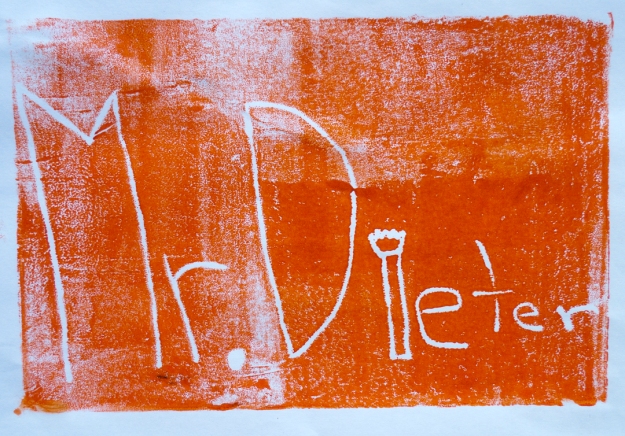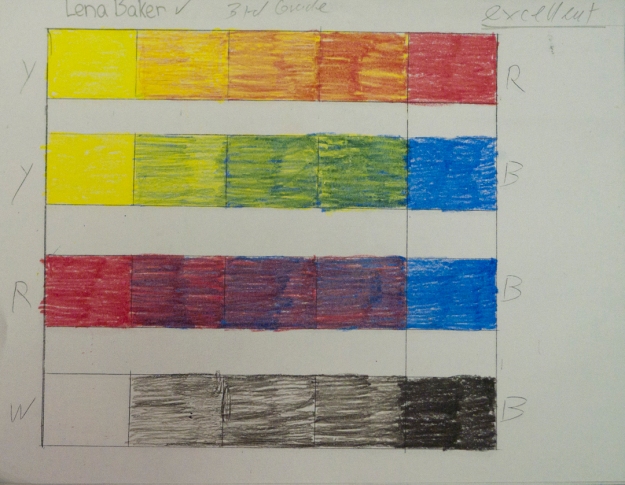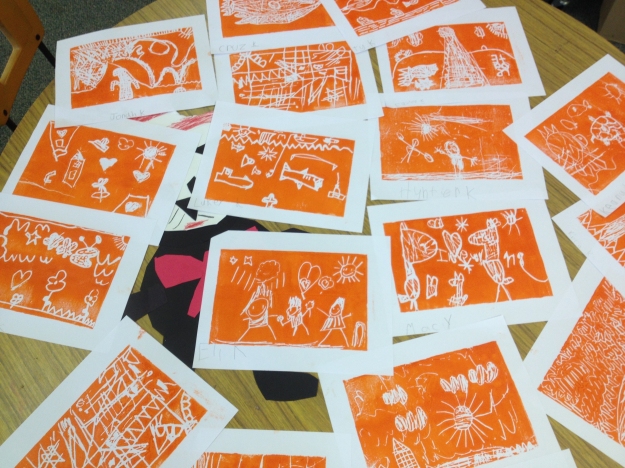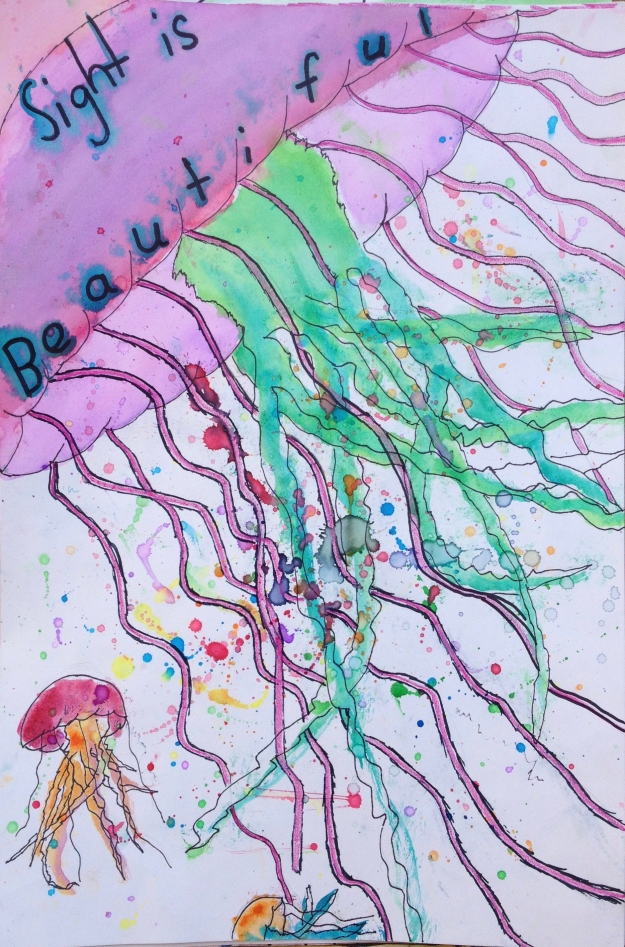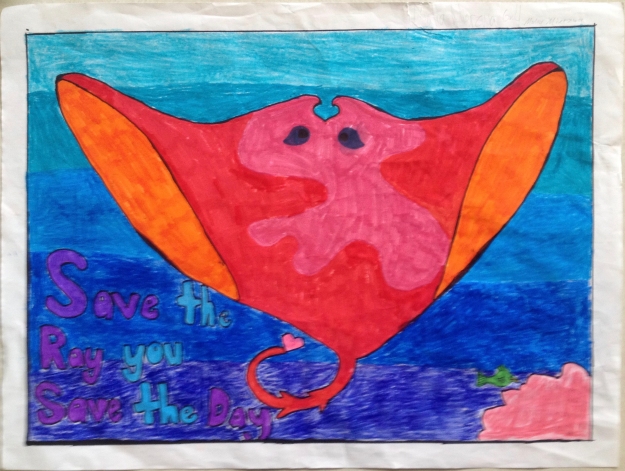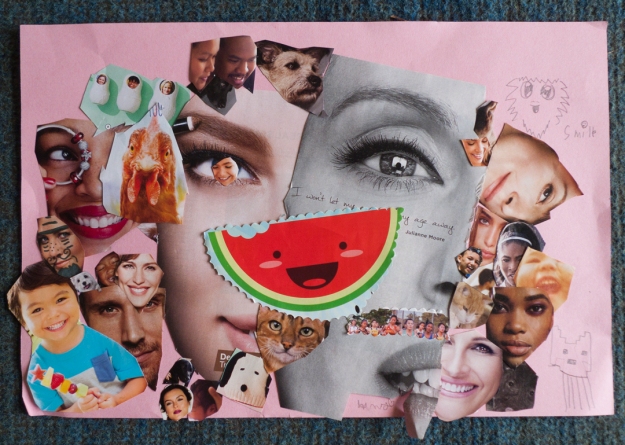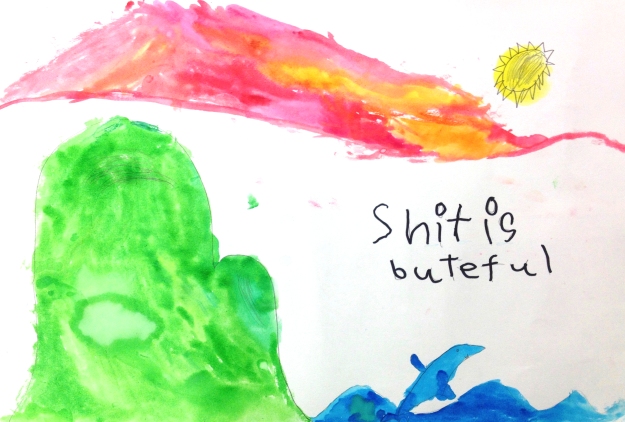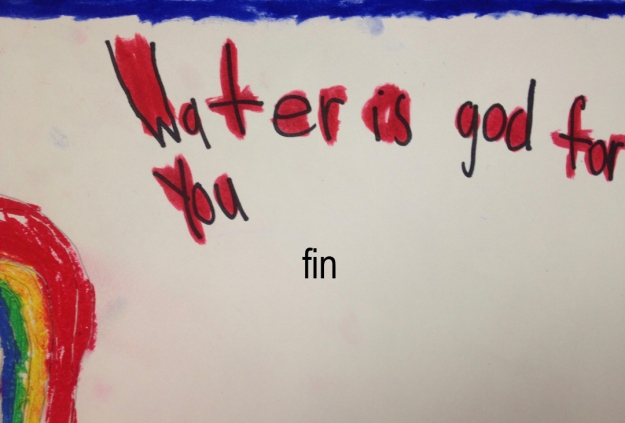My practice of taiji turns into works of art.

This fine art digital print (giclee, see below) of all 100 oil paintings is now available directly from the artist. Archival ink on archival paper, 18″x 24″.
It is available in three versions, 1. just the print on paper, shipped in a roll, 2. mounted on 1/4 foam, sprayed with an archival grade UV- anti fungal protective coating. and a piece of hardware in the back for easy hanging and 3. mounted in a floating wood frame. This includes the sprayed coat and the wire for hanging. All prints are numbered and signed by the artist and will come with a certificate of authenticity.
Detail of print in floater frame with signature

The author in front of installation of “100 VIEWS OF TAIJI” Soullenz Gallery, 2005. The ‘100 views’ had been shown first at Soullenz in 2003
“This is what I have been looking for my whole life,” is what I felt when I first experienced taiji in New York City in the spring of 1982. I have studied and practiced taiji since then. My main teachers have been Mantak Chia and T.K. Shieh in New York, and since early 1991 Dong Zeng-Chen and Alex Dong in Hawaii. I have participated in many taiji camps and travelled to China and Hong Kong four times. I teach taiji on Oahu’s Windward Side since 1992 and some of the same students are still with me today.

Some of my students getting ready for a performance at the Puohala Senior Center
Taiji-quan is a martial art that developed about 300 years ago, but has its roots much further back and is based on the Daoist theory of the ever changing dynamic relationship between yin and yang. By now it “has established itself as one of the world’s major sciences of self-cultivation. By fusing movement and metaphysics, it has taken its place alongside India’s yoga and the great systems of meditation which have arisen from time immemorial in all places.” Douglas Wile
Around 2000 I begun to explore taiji through drawings, woodcuts and oil paintings, trying to capture its energy. Just like my ocean paintings I am lured by the subjects of my passions, taiji, yoga, sailing, windsurfing, kitesurfing, swimming…, to delve deeper through art.

‘Self Portrait with Sword’ 72″ x 48″, charcoal on paper, ca 2001/3
Two taiji sketches, 8 x 10″, pencil, crayon on paper.
“100 VIEWS of TAIJI” , oil on canvas, 8″ x 10.” In the summer of 2003 I painted 100 small canvases from the taiji long form as inspired by the 1 1/2″ x 2 3/2″ big black and white photographs in Tung Chen-Chieh’s Red Book and my own years of practice. Old black and white photos are ever fascinating and besides the dynamic form of my teacher’s grandfather I was also drawn to the aesthetic of the simple studio set up and the shadows on the folds of the curtain. I assume these photos were taken in the late 40’s, but stand to be corrected.

Two pages from the Red Book by Tun Ying Chieh
The premise was, to create one hundred paintings, using oil on canvas and develop as many different approaches as I could muster, trying to express the energy and spirit of taiji. I painted one or more a day and was done by the time school started again in the fall. 98 of them were painted in one setting. Only two of them took some adjustment. #45 did not work so I scraped the paint off and voila, there was a ghost image left. Just perfect, the energy left in the room, once the master had moved on. I added a few broad strokes to # 100 in a second session. Since I painted the poses in the order they appear in the taiji set, the taiji adept can follow the form and you can see how my approach evolved.
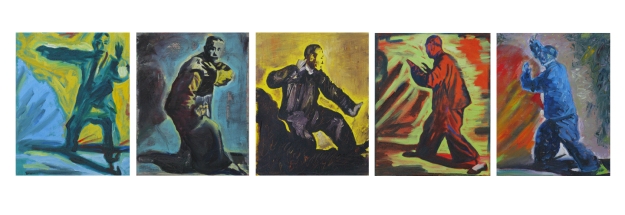
Five taiji paintings/100 8″ x 10″ oil on canvas, dieter runge 2003.

“100 VIEWS OF TAIJI” Installation at Soullenz Gallery 2003
Previously, I had done a series of pastel drawings on taiji in Ron Kowalke‘s drawing class at the University of Hawaii.
‘TAIJI’ , 18″ x 24″, pastel on paper
The ” 100 VIEWS OF TAIJI’ were shown in Honolulu’s Chinatown twice, at the Hamilton Library at UH Manoa, and selected pieces were shown in Hong Kong at the Dong Family Taiji gathering in 2007. Now 60 of them are in private collection in Berlin and the rest are in Hong Kong, New York, Montreal, Honolulu, Makawao, Kula and other places.

Dong Zeng-chen, Janet Jin and the author at Soullenz Gallery, 2005
Slideshow of a selection of “100 Views of Taiji.”
Taiji-quan literally means “Supreme Ultimate Boxing and is an internal martial art. It is practiced in different forms and uses weapons like staff, sticks and swords or push-hands with a partner. in this video I demonstrate the taiji dao, the broadsword, which represents the yang energy or the tiger.
“The Meaning of the Taiji symbol lies in the mutual production of yin and yang, the complementary exchange of hard and soft, the thousand changes and ten thousand transformations. This is the basis of taiji quan.” Douglas Wile
As Inspiration for the name “One Hundred Views of Taiji” I give credit to the Japanese printmaker Hiroshige’s One Hundred Famous Views of Edo, and Hokusai’s even more famous series on Mount Fuji.
Sources: T’ai-chi Touchstones: Yang Family Secret Transmissions, Compiled and translated by Douglas Wile, Sweet Ch’i Press, Brooklyn , New York, 1983
To the different spelling: Taiji Quan = Tai Chi Chuan like Bejing and Peking or Mumbay and Bombay, like Qi Gong and Chi Kung, like Dong and Tung.
The photos of the Red Book and some English explanations on which the “100 Views” are based.
Lineage: Tung Ying Chieh was one of the main disciples of Yang Chen Fu, the founder of Yang style taiji, Tung Fu Ling was his son and Jasmine Tung his daughter. Dong Zeng Chen and Tung Kai Ying are Tung Fu Ling’s sons. Alex Dong is Dong Zeng Chen’s son and Tung Chen Wei is Tung Kai Ying’s son. Besides having studied with Dong Zeng Chen and Alex Dong, I had also the pleasure to travel or hang out with Tung Kai Ying, Jasmine Tung and Tung Chen Wei in China, Hong Hong and on Oahu. The Tung/Dong family taiji is known for its grace, softness, dynamic power and martial prowess. It is said that you first must develop softness in order to develop power. If you have softness an oponent is not able to touch you.
Thanks to all my teachers and the many teachers before them. Special thanks to William Kelly, my New York friend and film maker, who assembled the 100 images in the grid and first came up with this idea; my deep gratitude to Miles Christsen my friend, drummer and owner of printlogic in Kailua, were this project is being realized.
Dong Zeng Chen – Tung Kai Ying
Chip Ellis’ site is a great resource on Dong Taiji
Addition August 2016: A few days ago my taiji friend Sylvain Deschenes from the Montreal Taiji Club send me this photo standing next to the late Jasmine Tung in front of the “100 Views” at my former home on Kailua’s Pu’ukani Pl, taken on March 1st 2005. Jasmine Tung was in Hawaii to do research on a book about her father Tung Ying Chieh. Aunt Jasmine as I called her was a graceful and inspirational and well respected taiji master. She stayed at a b&b next door and I was fortunate to hang out, take walks on the beach and hike with her. I had also travelled with her in China and participated in a Don/Tung family gathering in Hong Hong in 2007. Several of the above paintings ended up in her possession.

The author with taiji master Jasmine Tung in front of “100 Views of Taiji”, Kailua, March 2005

Taiji symbol on wood, Purple Cloud Temple, Wudang Mountains, 2005










